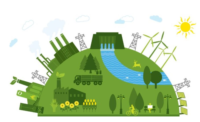Special Report: Sustainability
Multi-Material Flexible Recovery: Nowhere to Go But Up




Multi-material flexible packaging is material-efficient, lightweight and low impact, but its inability to be effectively recycled or otherwise recovered in an environmentally beneficial manner has always been its Achilles’ heel. This can be a deal breaker for the brands that find themselves under increasing pressure to use packaging not destined for the landfill, and despite all of its advantageous sustainability characteristics, there is no easy fix for this challenge. However, a new resource from the Sustainable Packaging Coalition (SPC) provides a full scope of the projects currently underway to address recovering this packaging format.
The SPC’s new web-based resource (www.multi-materialflexiblerecovery.squarespace.com) is the first to collect and analyze all current work in the multi-material flexible packaging recovery space, showing the breadth and depth of activity around the globe. On the site, projects are tagged according to the stages of the recovery process they touch: package design, waste collection, sortation, reprocessing technology and/or end market demand. To draw conclusions from the sum of the parts, the SPC created a summary of lessons learned, giving key insights as they relate to each phase of recovery.
Pre-Consumer and Post-Consumer Waste
One lesson learned is that pre-consumer waste is an entirely different ballgame compared with post-consumer waste. Pre-consumer waste is typically composed of a uniform, homogenous material composition. Post-consumer waste is not. Within any major type of packaging, one can find a wide array of variations on the central material, but nowhere else in the world of packaging is there such a tremendous amount of variation than multi-material flexible packaging.
A flexible structure may range from 3 to 9 different layers of barrier materials, including multiple resins, paper and aluminum. Post-consumer flexible packaging waste is a jumble of these virtually infinite combinations of materials, and very few existing solutions offer the ability to blend dissimilar polymers together into a material with appreciable value. Generally speaking, success in plastics recycling is dependent upon knowing the exact composition of the materials to be blended. Fortunately for pre-consumer multi-material flexible packaging waste, that exact composition is typically known, and conventional reprocessing technologies hold promise. But barring the development of effective means for processors to identify and sort the various materials within the post-consumer jumble, recovery technology needs to be agnostic to the variety and lack of uniformity of the input materials. Plastics-to-energy solutions like pyrolysis, a technology that transforms films into a synthetic oil, may currently offer the best path forward for post-consumer material.
A Buddy in the Recovery Stream
A big challenge around recovering thin, lightweight plastics is that they are thin and lightweight, meaning a huge number of packages need to be aggregated in order to get the critical mass necessary for viable recovery. To generate sufficient volume, regions could work together to accumulate and store collected material until a sufficient volume exists, but this is complicated by the idea that many flexible packages are used for food applications, and waste haulers and processors are usually averse to any storage of waste with food residue. Since organic waste attracts insects and rodents, the usual strategy is to move the material as fast as possible.
The challenge of accumulating critical mass trickles down to the material recovery facility (MRF), where multi-material flexible packages may need to be sorted from a commingled stream. Technologies such as optical sorters and air jets have proven effective at identifying and sorting out the majority of flexible packaging. However, even if there is an opportunity for the MRF to make money by sorting and selling packaging bales, a sufficient volume of material is needed to justify the investment for the sortation equipment. These pieces of equipment are expensive, and their wear and tear is largely based on the number of items they process, not the weight of the items they process. Meanwhile, the economics around recovery are driven by weight, so the financial equations to justify infrastructure investment at MRFs are generally tilted in the wrong direction.
One potential solution is to find a broader collection of plastic packaging waste in which flexible packaging can be included and, indeed, many of the initiatives that provide promise for multi-material flexible packages are more generally scoped around a wide berth of hard-to-recover plastics. For instance, a pyrolysis operation must be constantly fed with a voluminous stream of material that multi-material flexible packaging waste cannot provide by itself. For better or worse, there are many other categories of plastic packaging without established recovery streams, and they may all need to buddy up for any of them to enjoy beneficial recovery.
The Sustainable Packaging Coalition Perspective
The SPC acknowledges the number of preferable sustainability characteristics embodied in multi-material flexible packaging and encourages more industry engagement in the growing number of activities and initiatives to establish recovery solutions. Too often this industry is faced with an “or” question – “recoverable packaging or lightweight, low impact packaging?” – and for every type of packaging on either side of that question, the “or” needs to be transformed to an “and.” With a new robust view of the constructive activity across the globe invested in finding solutions, it’s clear that solutions for flexible packaging recovery are closer to fruition than ever before. Multi-material flexible packaging has a tremendous opportunity for an “and,” and the SPC hopes for more momentum to be built.
Sustainable Packaging Coalition
Looking for a reprint of this article?
From high-res PDFs to custom plaques, order your copy today!







